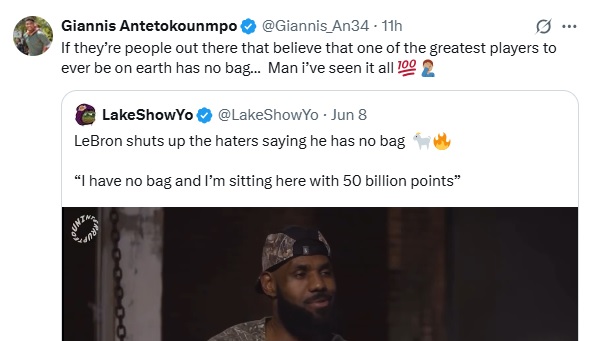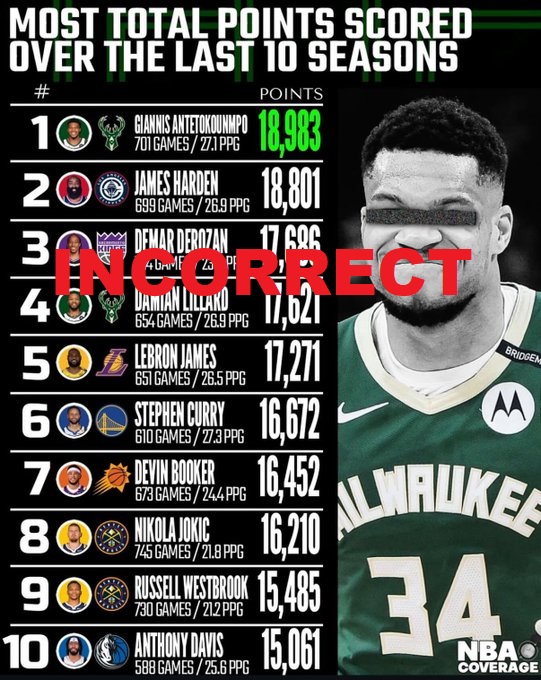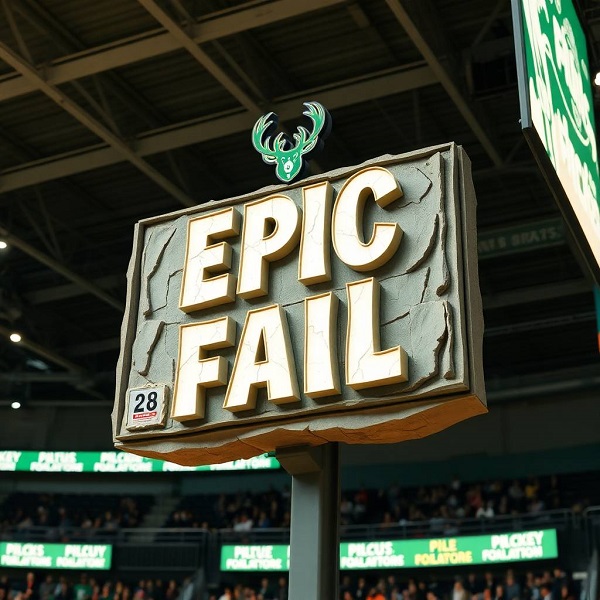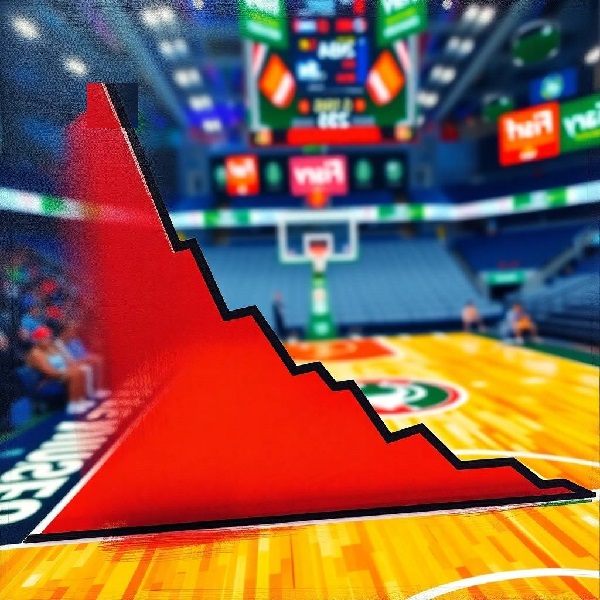Giannis Antetokounmpo, the “Greek Freak,” has been a dominant force in the NBA for years. Over the last three regular seasons (2022-23, 2023-24, and 2024-25), he’s averaged around 30.6 points per game (PPG), putting him among the league’s elite scorers. Fans and analysts often hail this as proof of his all-time greatness, with back-to-back-to-back 30+ PPG campaigns. But let’s pump the brakes. While the raw numbers look impressive, a deeper dive reveals that Giannis’ scoring is overrated. It’s padded by factors like excessive free-throw attempts, limited shooting range, and efficiency that doesn’t hold up under scrutiny—especially when compared to other top scorers or in high-stakes playoff scenarios. Don’t get me wrong: Giannis is a superstar. But treating his PPG as untouchable overlooks some glaring flaws.
1. Overreliance on Free Throws: Volume Over Efficiency
One of the biggest knocks on Giannis’ scoring is how much it depends on getting to the free-throw line. Over the last three seasons, he’s averaged a whopping 11.2 free-throw attempts (FTA) per game—leading the league in that category. That’s more than players like Shai Gilgeous-Alexander or Luka Dončić, who also drive a lot but incorporate more perimeter scoring.
Sure, drawing fouls is a skill, and Giannis’ physicality makes him a nightmare for defenders. But here’s the issue: his free-throw percentage (FT%) has been mediocre at best, hovering around 64% across these seasons (64.5% in 2022-23, 65.7% in 2023-24, and 61.7% in 2024-25). That’s well below the league average for high-volume scorers, who often shoot 80-90% from the line. As a result, he’s leaving points on the table—points that could make his scoring look even more dominant if he converted at a higher rate.
This foul-baiting style inflates his PPG without requiring the same level of skill diversity as other scorers. For context, in 2022-23 alone, nearly 40% of his points came from free throws, thanks to those 12.3 attempts per game. Critics argue this makes his scoring “predictable and biased” by officiating, as seen in games where refs swallow their whistles, and his output drops. Without this crutch, his averages might dip closer to 25-27 PPG, putting him in good-but-not-great territory.
2. Limited Shooting Range: Great at the Rim, But That’s It
Giannis is arguably the best finisher at the rim in NBA history, with field-goal percentages (FG%) north of 55-61% in these seasons. His euro-steps and dunks are highlight-reel stuff. But step back a few feet, and the story changes. His three-point shooting (3P%) has been abysmal: 27.5% in 2022-23, 27.4% in 2023-24, and a career-low 22.2% in 2024-25. He attempts fewer than 2 threes per game on average, meaning defenses can sag off him and clog the paint without fear.
This lack of versatility means his scoring is “overrated away from the rim,” as one analysis put it. Compare that to players like Kevin Durant or Stephen Curry, who can score from anywhere, forcing defenses to respect their entire game. Giannis’ approach works in the regular season when teams aren’t scheming as intensely, but it limits his ceiling as a “complete” scorer. In an era where spacing and shooting rule, relying almost exclusively on drives feels outdated—and overrated when propped up by sheer athleticism rather than skill.
3. Efficiency Metrics Don’t Stack Up to Peers
True Shooting Percentage (TS%) is a gold-standard metric for scoring efficiency, accounting for field goals, threes, and free throws. Giannis’ TS% over the last three seasons averages about 62.6% (60.5% in 2022-23, 64.9% in 2023-24, 62.5% in 2024-25). That’s solid for a big man, but for someone averaging 30+ PPG, it’s not elite. High-volume scorers like Nikola Jokić or Joel Embiid often post TS% in the 65-70% range while matching or exceeding his points.
In comparisons of top scorers over the last three seasons, Giannis ranks outside the top tier in relative TS% (adjusted for league average). For instance, players like Curry or Durant have historically been +5-10% above league average on similar volume, while Giannis hovers around +2-4%. His low FT% drags this down—imagine if he shot 80% from the line; his TS% could jump to 68-70%, making his scoring truly unstoppable. As it stands, the metric reveals inefficiency masked by volume.
Some argue TS% “downplays” Giannis because of his high FTA, but that’s the point: efficiency includes making those shots. He’s getting more opportunities than most, yet not capitalizing fully.
4. Playoff Drops: Regular-Season Hero, Postseason Question Marks
The regular season is one thing, but championships are won in the playoffs—and that’s where Giannis’ scoring often falters. Over the last three years, he’s averaged 29.4 PPG in the postseason, but across only 8 games due to injuries (missing the entire 2023-24 playoffs). More telling is the efficiency drop: In the 2022-23 playoffs, his TS% plummeted to 52.5% from 60.5% in the regular season, with FT% at a dismal 45.2%.
Defenses wall up the paint in the playoffs, exposing his lack of outside shooting. As one Reddit discussion noted, people overhype his playoff scoring by focusing on raw points while ignoring “significant drops in efficiency.” Even in his strong 2024-25 playoff showing (33.0 PPG, TS% 65.1%), turnovers spiked to 4.6 per game, showing vulnerability under pressure. This inconsistency suggests his regular-season PPG is boosted by a less intense environment, making it overrated as a measure of true scoring prowess.
5. Contextual Factors: Games Played and Team Support
Finally, let’s talk durability and context. Giannis played only 63 games in 2022-23 and 67 in 2024-25—missing significant time due to injuries. While his per-game averages hold up, sustaining that over a full 82-game slate is another story. Other top scorers like LeBron James or Kevin Durant have logged more minutes while maintaining efficiency.
The Bucks’ system also plays a role. With shooters like Damian Lillard drawing attention, Giannis benefits from open lanes. But when the team struggles (as in recent playoff exits), his scoring doesn’t elevate them enough. Critics have called his overall impact “overrated,” pointing to underachievement in key moments. Even in the regular season against better opponents Giannis seems unable to make a difference.
Impressive, But Not Untouchable
Giannis Antetokounmpo’s 30+ PPG over the last three seasons is a testament to his talent and work ethic. But it’s overrated because it relies too heavily on free throws, lacks range, and doesn’t translate as efficiently in playoffs or against top defenses. If he improves his FT% and adds a reliable jumper, he could silence the doubters. Until then, let’s appreciate the numbers for what they are: great, but not the full story of elite scoring.









